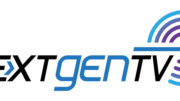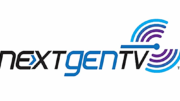There are rumors out there all over the internet. Most of them end up being a dead end, but occasionally one of those dire rumors actually ends up being true. If you look through recent YouTube videos and articles, you’ll hear a massively impactful rumor, and I’m here to put it to rest.
Every converter box is obsolete?
If you read some of the things you’ll see out there, you’ll come away thinking that pretty much every piece of ATSC 3.0 hardware out in the market today is already obsolete. That sounds like it could totally derail any attempts to get the fledgling NextGenTV standard off the ground. Let’s dig into the details.
Next Gen TV is another term for ATSC 3.0. No matter what you call it, it’s a proposal for a new broadcast standard for the USA. It would probably also flow over to Canada, Mexico, and other countries that currently follows the US’s lead on television. It’s a complete re-imagining of the way that television is broadcast. It’s based on modern technology instead of the 1990s, DVD-level tech that underlies today’s broadcast technology.
The goal of ATSC 3.0 is to provide higher-quality video and additional services using the same broadcast channels that are currently in use. Advanced compression will allow 4K broadcasts, and connecting the TV to the internet will allow things like targeted advertising, on-demand programs, and direct online shopping.
And all of that may not happen.
Silly fear could derail it all
There are broadcasters out there who are so afraid of piracy that they’re willing to break the whole system. This has been a problem since the dawn of digital TV. Some broadcast executives genuinely believe the hype. They think that there’s a whole economy of people downloading Grey’s Anatomy and selling pirate discs on the side of the road. That’s why so much pay-TV content is encrypted.
The encryption on today’s TV programming is fairly easy to defeat, which is why you’ll see YouTubes with excerpts from TV programs all the time. (I’m not going to tell you how to do it. But there’s plenty on the internet if you search.) However, today’s antenna TV is totally unencrypted. If those same broadcasters have their way, that’s going to change.
Today’s broadcasters have successfully argued that ATSC 3.0 content needs to be encrypted. This isn’t technically illegal, as long as every ATSC 3.0 device can decrypt that content. You see, the law says that every TV sold in the US must be capable of showing every broadcast. However, it doesn’t say that you have the right to pause, record, or reproduce that content. So, the thought is that you’d be able to watch, but not record, live TV.
Where we are now
The encryption protocols aren’t finished yet. This whole process is very far behind, honestly. It started in 2017 and it was supposed to be totally finished by now. However, the world didn’t work that way. This year, the FCC will have to make some very hard decisions about how to proceed with ATSC 3.0, and it’s not clear where they will go.
There are currently no low-priced ATSC 3.0 devices. Consumers will expect low-cost converter devices and the government will work to require it. The devices out there don’t currently support encryption. The encryption standards haven’t even been finished yet. That means, Yes, every current converter box will be obsolete soon. That encryption won’t be able to be added through software, so if you buy a current converter box, you’ll end up buying another one in the future.
What does this mean?
Honestly, that’s up to the FCC. They are supposed to decide by the end of July where the entire ATSC 3.0 process will go. The current authorizations all expire at that point. They can continue testing the same way they are now. Or, the whole thing could be scrapped. Or, something else could happen. It’s hard to know what they’ll do.
It’s also hard to know how consumers will react. The TV landscape is changing very quickly and I honestly can’t predict where it’s going. I know that I’d like to see converter boxes priced at $50-$75, and I’d like to see some path to record content. But I’m just one blogger. I have no way of changing the FCC’s minds.



